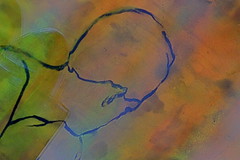Recently at one of my favorite sites, RealitySandwich.com, I came across a short but interesting article entitled, “Hallucinating In The Dark.” It stated,
“A new study, published in the Journal of Nervous and Mental Disease, reveals that participants of normal health could achieve visual hallucinations after only 15 minutes of sensory deprivation. Interestingly, nobody pressed the panic button that was available to end the experiment.”
The article doesn’t describe what type of hallucinations they are. So I will make a comment on two things:
Sensory deprivation is known for causing out-of-body-experiences (OBE) and wake-initiated lucid dreaming (WILD). If that is the case for these hallucinations then they are probably generated in the upper visual cortex regions. The optic nerve and primary cortex will only have limited activity in this process.
However, more than likely we are talking about “geometric hallucinations” which are often due to phosphene, or what I like to call “neural static.” The brain is always firing neurons regardless of the presence of stimuli or not, you can actually detect this activity in your eye if you become aware of it and hold your attention. It is always there. Check out the link for a better explanation.
The idea of using sensory deprivation techniques as a tool for exploring consciousness has fascinated me ever since I first watched Joe Rogan’s explanation of his isolation tank.
I also believe that these exact states can be achieved with meditation, deep sleep hypnosis, and any other mental skill that allows an individual to put their body to sleep while keeping their mind – or more specifically consciousness – intact. The best way to describe it is like slipping into a lucid dream, but it is less expected and it is easier to get overexcited and wake yourself up.


